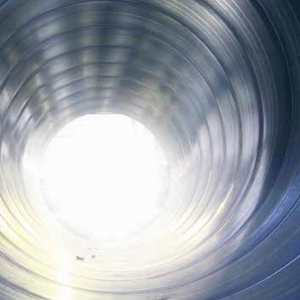
Localisation perspectives – the steel viewpoint
In recent months the spotlight has been shone on government’s localisation plans, which aims to reduce imports and build domestic production to supply local and international markets, thus enabling job opportunities. But is localisation a sustainable option to develop SA or will it create further challenges?
For years various industries have taken a knock due to high production costs, skills gaps, unrest and cheaper imports. Keitumetse Moumakoe, CEO of the Steel Tube Export Association of South Africa gives his viewpoint.
How has the industry been impacted due to imports up to date?
Cheap Asian imports have left an indelible mark on the South African local steel tube and pipe industry, that in part culminated in the demise of once one of South Africa’s largest steel tube and pipe manufacturers Robor in 2019. The failure by government of not extending the same import duty and tariff protection to the downstream steel industry as they did to the primary industry, left this segment of industry completely exposed to cheap imports and further exacerbated the dire straits the industry was already in.
Other notable steel tube and pipe manufacturers that had to ‘right size’ their companies to mitigate the market and import onslaught include Macsteel Tube and Pipe and Trident Steel, to name but a few in the public domain. A jobs bloodbath inevitably ensued, closures and business rescue cases rose as the downstream steel industry’s margins were eroded by imports and the sustainability of the industry in existential threat. The steel tube and pipe industry has shown positive green shoots post the risk adjusted Covid-19 opening of the economy due to pent up demand, and it is hoped that an infrastructure growth lead economy will maintain this trajectory.
How will localisation policies benefit SMMEs?
Localisation is very beneficial for SMMEs who often plug into the steel value chain at a downstream level, where they fabricate and add value to primary and midstream steel products to produce specific structures and products often done to final user specifications. Localisation reduces the barriers of entry into the industry because steel resources would be locally and readily available for these micro enterprises who supply into both public and private projects. An infrastructure driven economy is also imperative to creating opportunities for small players and assist in their sustainability.
How do you see the industry benefit holistically from the policy?
Holistically, localisation enables the steel industry to leverage on public expenditure from SOEs who’s collective expenditure contributes on averages between 15% to 20% to GDP; it enables the development and enhancement of local manufacturing capacity and capabilities, creates employment and supports broader economic empowerment.
Localisation of steel products underpinned by the objectives of the recently signed Steel Masterplan could have the gravitas to influence supply chain competitiveness and economic policy by getting key stakeholders that own and manage key supply chain links to fully commit to the localisation drive.
Industry would require policy amendments that would ensure that steel manufacturers have access to globally competitive domestic input material (i.e. hot roll coil), energy/electricity, port tariff costs, export rebates and transport infrastructure. Without these interventions our steel export efforts will be futile, and we’ll witness more and more transhipment imports from Asia via South Africa with final destinations to other SADC countries. The localisation drive and the short to medium term drive of establishing a globally competitive steel supply chain have got to be aligned and mutually inclusive, failing which the unintended consequences will result in unwarranted construction and end product cost inflation.
What needs to be done to ensure localisation policies are sustainable?
Significant public capital infrastructure investments are critical year-on-year, adequate raw material and semi- finished input products to manufacture designated finished goods, lower barriers of entry into the downstream steel industry and efficient competitive manufacturing. Localisation must not be used as a scapegoat for the uncompetitive.
How do you think localisation policies impact trade agreements?
Localisation policies are not unique to South Africa and some of the most prominent developing countries such China, India and South Korea employed such industrial policies during the nascence of their industrialisation drives. It was only when the respective countries had achieved a level of competitiveness that they moved towards a carefully calibrated liberalisation of trade and took advantage of any trade openings to expand their manufactured exports.
I’m confident that the DTIC have applied their minds in implementing localisation industrial policy within the confines and framework of South Africa’s trade agreements with its trading partners.
What about the cost of producing products locally?
The cost of locally manufactured generic carbon steel tube and pipe products is comparably more expensive than equivalent Chinese manufactured products due to structural cost inefficiencies in South Africa’s steel supply chain.
Key legacy input cost challenges are as follows:
- Escalating electricity prices are rendering primary and downstream steel manufacturing companies, especially high energy consumers, uncompetitive.
- Inefficiencies and high costs of road, rail and port infrastructure continue to undermine the competitiveness of the downstream industry.
The uncompetitive cost of hot roll coil input material that steel tube and pipe manufacturers procure from the primary manufacturer.
Other perspectives
According to a statement by the DTIC, localisation “is about building local industrial capacity for the domestic market and for export markets. It is not a turn away from engaging in global markets, but it is about changing the terms of the engagement to one where we are no longer mainly an exporter of raw materials.”
The response to localisation by business has been varied according to a report released by Intelledex: “A number of respondents posed interesting concerns around export and AfCFTA: how can companies exporting from SA and building globally competitive businesses be expected to import substitute when they should be deepening global supply chains, particularly in the rest of Africa. Some called for an exemption of export-led companies to ensure that there would be jobs maximisation onshore interlinked to new global supply chains. Currently there is an uneasy calm in sectors with compacts like car manufacturing, but it would seem there is some cry from industry for a more thoroughly thought-out policy in this area from DTIC.”
A report released by the CDE argues that: “The benefits of localisation are overstated while the costs are dramatically understated.” The report further states: “The competitiveness of exporting firms, particularly of manufactured goods, is also dependent on access to high-quality, competitively priced intermediate inputs. Since localisation will restrict access to competitively priced imports and result in higher production costs, the policy is, in effect, an anti-export strategy.”
Source: www.sabusinessintegrator.co.za
RECENT POSTS
SUBSCRIBE TO OUR NEWSLETTER
- +27 (0)12 003 2878
-
keitumetse@steasa.com
astpm@astpm.com - Ground floor, Pegasus Building 1, Menlyn Maine, Waterkloof Glen ext. 2, Pretoria, South Africa, 0081



